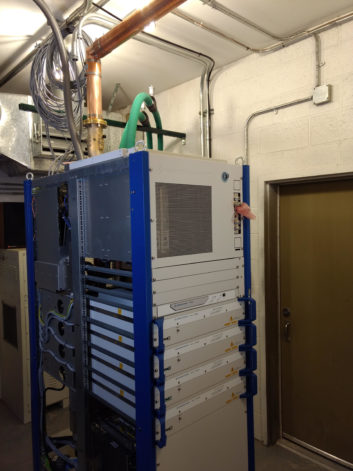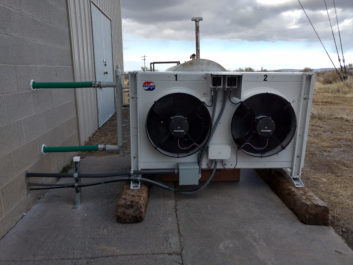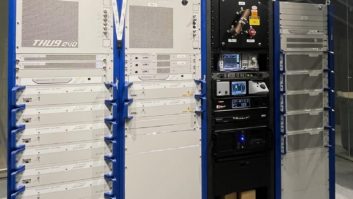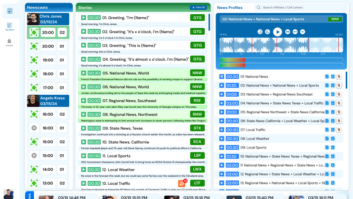 The author is vice president of engineering for Riverbend Communications.
The author is vice president of engineering for Riverbend Communications.
IDAHO FALLS, Idaho — One of our stations was operating with an older Harris transmitter, which was no longer supported, and it was due for replacement. We have two transmitters operating in the room, and it was so noisy you couldn’t have a conversation in there. I was interested in replacing the transmitter with something that would run quietly. I have experience with one brand of solid-state transmitter, and it is definitely not quiet. And, naturally, I expected a new transmitter to bring cost savings in terms of using less electricity, reduced air conditioning costs and not having to purchase replacement tubes. The Harris needed a tube which would cost nearly $3,000 rebuilt.
I surveyed the market for a solid-state transmitter that would check all my boxes. This meant considering liquid-cooled transmitters — a leap of faith for a guy used to working with forced-air cooled transmitters for 40 years. I knew the high-power UHF TV guys have been using liquid cooling with their high-voltage tubes for years but most of them seemed nervous. It was an attitude adjustment.
 I reviewed the details for two brands of liquid-cooled transmitters, one of them the Rohde & Schwarz THR9, as well as the air-cooled transmitter I was already familiar with. I obtained price quotes for both the liquid-cooled units.
I reviewed the details for two brands of liquid-cooled transmitters, one of them the Rohde & Schwarz THR9, as well as the air-cooled transmitter I was already familiar with. I obtained price quotes for both the liquid-cooled units.
I did not pursue the air-cooled transmitter because it did not meet one of my requirements, since it exhausts all its heat into the room, it does not reduce the need for cooling. It required the same amount of air conditioning that the previous Continental tube rig needed.
The liquid-cooled transmitters have an external heat exchanger that installs outside the building, and the heat goes there. There is no need to draw in outside air or provide tons of air conditioning. I ended up selecting the R&S THR9 20 kW transmitter, based on three factors: the splendid worldwide reputation of Dr. Ulrich Rohde and his company which includes high-end test equipment and VHF TV transmitters; the favorable price quotation; and warranty coverage that provided peace of mind.
The THR9 comes with enough coolant hose to install the heat exchanger up to 60 feet from the transmitter cabinet- it can be located further if necessary. I decided to locate it just outside the front of the transmitter building, and the THR9 sits in the middle of the room. It is compact and I wanted to retain access to all four sides of the cabinet, a decision I do not regret. The old Harris remained in place as a backup transmitter. It wouldn’t have been possible to remove it anyway — it must have been installed before the walls went up.
R&S assigned a factory tech to support our installation, and he contacted me by email. He gave me a useful tip or two, but I did not find it necessary to contact them further during the install, which took me about one day after the electricians finished the AC hookup. I did read the factory manuals thoroughly before proceeding — they are translated from the German, and Google Translate was my friend.
Now that the THR9 is in operation, the transmitter room is much quieter than it was. The only sound in the room is the soft whoosh of the forced-air cooling in the grounded-grid transmitter of our other station at the site. The R&S transmitter is virtually silent. The only way to tell if it’s running or not is to read its meters. And it has no physical meters. The front panel has an LED touchscreen with metering and control, which retracts inside the cabinet when not in use. This screen is available remotely and we can view it anywhere. The transmitter has two network connections available to use.
There are two coolant pumps inside the single cabinet. If one is removed from service the remaining pump will carry the load. Similarly, the heat exchanger has two cooling fans and if one fails, the remaining fan is sufficient to carry the load. There are four power amplifier modules in the 20 kW transmitter, and if one fails, the remaining amps pick up the load and operation continues uninterrupted. Amps can be easily and quickly removed without losing a drop of coolant.
We have two years of experience with the R&S THR9 transmitter now, and I am thrilled with its performance and reliability (and silence). And when the grounded grid transmitter is replaced, it will be with another THR9.












